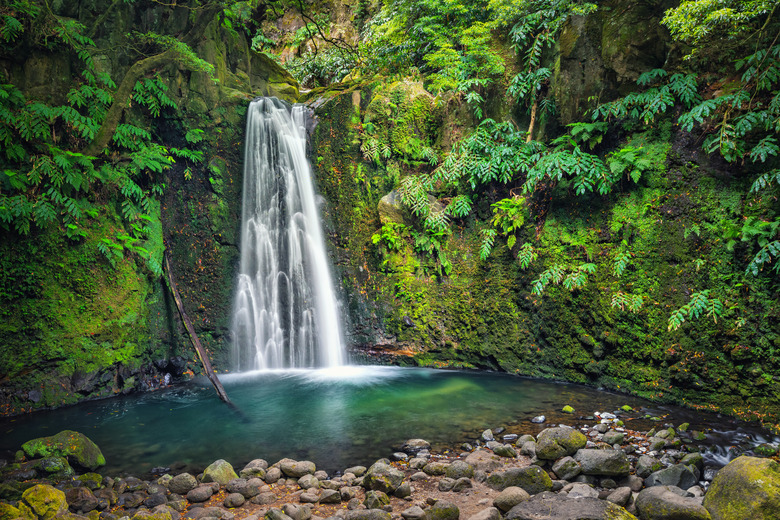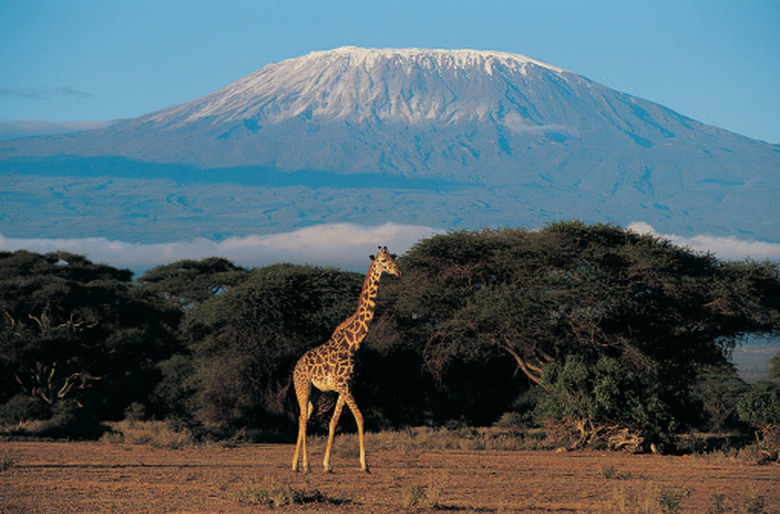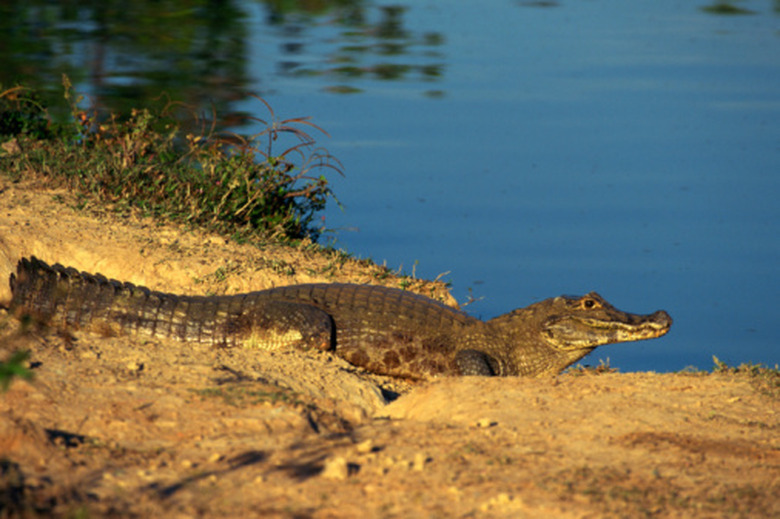A List Of Landforms In The Tropical Region
Large parts of the tropics are so lushly vegetated that underlying rocks are not easy to see. Nonetheless, this region — a belt along the equator between the Tropic of Cancer and the Tropic of Capricorn — features a diversity of striking landforms, from rolling plains to massive mountains. Climatically, the tropics are generally defined by year-round warmth and high humidity, which encourages both profuse vegetation and plenty of water to sculpt the landscape.
Inselbergs
Inselbergs
Isolate outcrops of resistant rock that loom above surrounding terrain are called inselbergs, and while they are not restricted to the tropics by any means, some spectacular examples lie in this climatic zone. For example, in parts of central and west-central Africa, massive granite inselbergs rear from lowland rain forest and deep swamps. Such monoliths derive from differential rates of weathering and erosion, with less-resistant layers of rock and sediment being whittled away while the more durable masses remain.
High Mountains
High Mountains
Some of the highest elevations in the tropics are at the summits of great lone volcanoes, from the Rift Valley cones of East Africa to the fire islands of the Hawaiian archipelago. Other lofty highlands derived from processes of tectonic collision and volcanism include the substantial mountains of New Guinea and the heraldic Andes of South America, the highest mountains outside of the Himalaya and partly in the tropics. Such landforms encompass huge swaths of elevation and microclimate, encouraging a rich and diverse ecology. Remarkably, glaciers and icefields persist on the highest peaks in these equatorial locations, such as 19,341-foot Kilimanjaro in Tanzania and 20,565-foot Chimborazo in the Andes of Ecuador. Unique montane forests and heathlands on such far-flung high peaks often boast plant species found nowhere else in the world due to their long isolation.
Waterfalls
Waterfalls
The generous precipitation of the tropics translates to large and numerous rivers and streams, including some of the biggest in the world, like the Amazon and Congo. Waterfalls and cataracts commonly form where resistant rock layers are exposed in the river channel. Indeed, some of the planet's largest waterfalls are in this zone, including Victoria Falls on the Zambezi River in southern Africa and Iguaza Falls on the eponymous river in central South America.
Wetlands
Wetlands
Some of the planet's great wetlands are in the tropics. Largest of all is South America's Pantanal, a vast landscape of marshes and seasonally-flooded savanna and grasslands occupying a broad topographic depression, fed by the Paraguay River and its tributaries. Another massive wetland is the Sudd in southern Sudan along the floodplain of the White Nile, its mosaic of papyrus swamps, sloughs, grasslands and riparian forests roamed by huge herds of large mammals and patrolled by hippos and crocodiles.
References
- World Wildlife Fund: Terrestrial Ecoregions – Northeastern Congolian Lowland Forests
- "Geomorphology of the Tropics"; Alfred Wirthmann; 2001
- "Timberline: Mountain & Arctic Forest Frontiers"; Stephen F. Arno, Ramona P. Hammerly; 1984
- Seven Natural Wonders: Iguazu Falls
- World Wildlife Fund: Terrestrial Ecoregions – Pantanal
- World Wildlife Fund: Terrestrial Ecoregions – Saharan Flooded Grasslands
Cite This Article
MLA
Shaw, Ethan. "A List Of Landforms In The Tropical Region" sciencing.com, https://www.sciencing.com/list-landforms-tropical-region-8358712/. 22 November 2019.
APA
Shaw, Ethan. (2019, November 22). A List Of Landforms In The Tropical Region. sciencing.com. Retrieved from https://www.sciencing.com/list-landforms-tropical-region-8358712/
Chicago
Shaw, Ethan. A List Of Landforms In The Tropical Region last modified August 30, 2022. https://www.sciencing.com/list-landforms-tropical-region-8358712/


